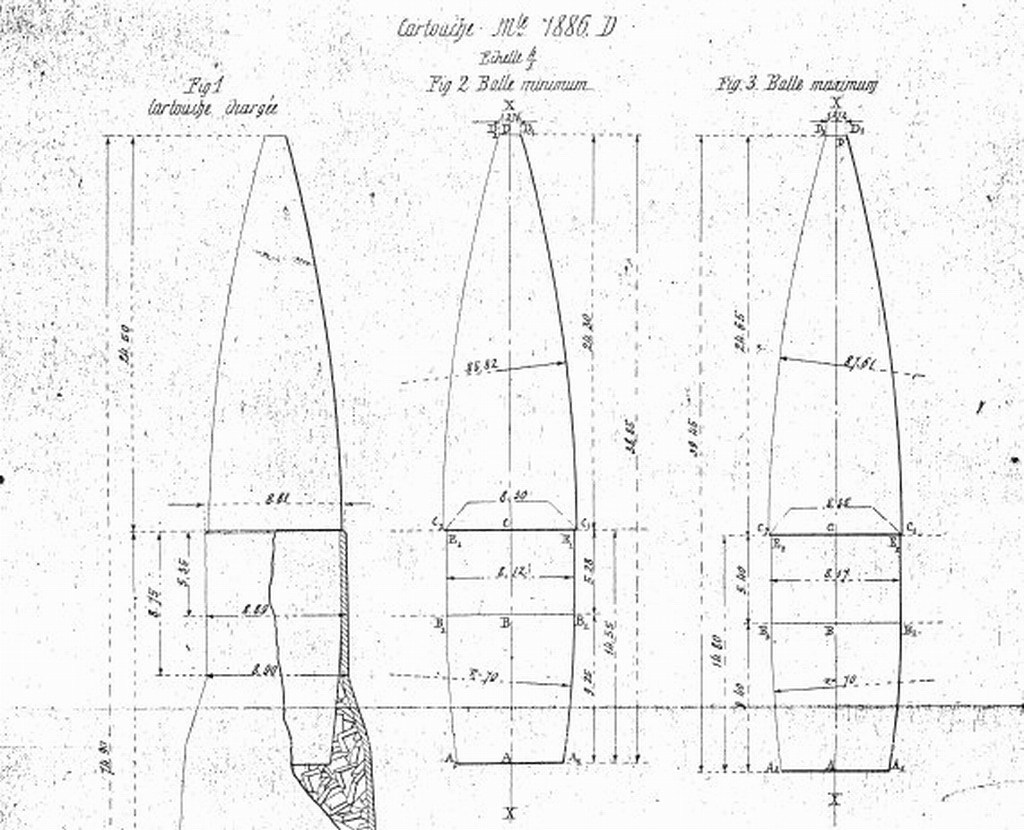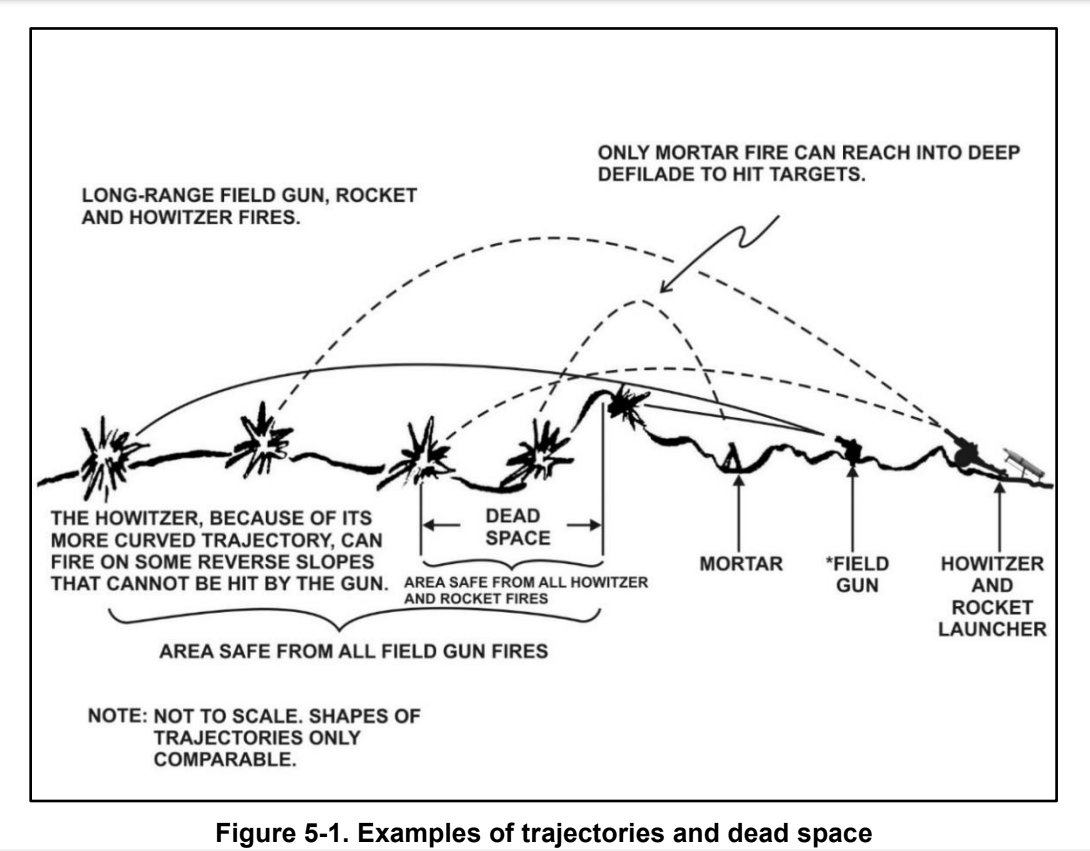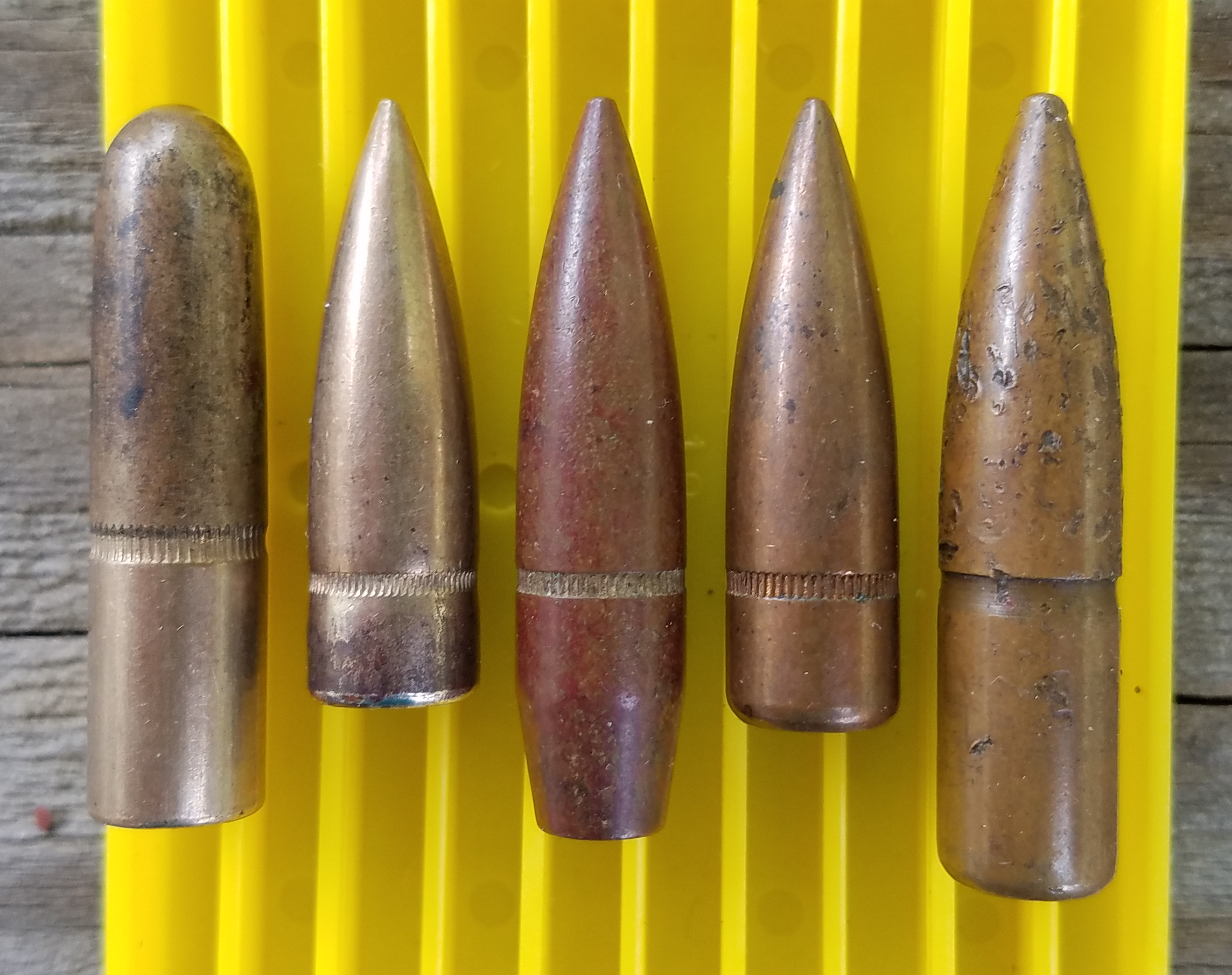|
Spitzer (bullet)
A spitzer bullet (from , "point shot") is a munitions term, primarily regarding fully-powered and intermediate small-arms ammunition, describing bullets featuring an aerodynamically pointed nose shape, called a spire point, sometimes combined with a tapered base, called a boat tail (then a spitzer boat-tail bullet), in order to reduce drag and obtain a lower drag coefficient, resulting in an aerodynamically superior torpedo shaped projectile, which decelerates less rapidly and has improved external ballistic behaviour, at the expense of some potential weight and kinetic energy relative to blunter ogive/round/flat-nose flat-base projectiles. The type which was developed for military purposes in the late 19th and early 20th century and was a major design improvement compared to earlier rounder or flatter-tipped bullets in terms of range and accuracy. Its introduction, along with long-range volley sights for service rifles, changed military doctrines. Area targets at rang ... [...More Info...] [...Related Items...] OR: [Wikipedia] [Google] [Baidu] |
Ammunition
Ammunition, also known as ammo, is the material fired, scattered, dropped, or detonated from any weapon or weapon system. The term includes both expendable weapons (e.g., bombs, missiles, grenades, land mines), and the component parts of other weapons that create the effect on a target (e.g., bullets and warheads). The purpose of ammunition is to project a force against a selected Targeting (warfare), target to have an effect (usually, but not always, lethal). An example of ammunition is the firearm Cartridge (firearms), cartridge, which includes all components required to deliver the weapon effect in a single package. Until the 20th century, black powder was the most common propellant used but has now been replaced in nearly all cases by modern compounds. Ammunition comes in a great range of sizes and types and is often designed to work only in specific weapons systems. However, there are internationally recognized standards for certain ammunition types (e.g., 5.56×45mm NA ... [...More Info...] [...Related Items...] OR: [Wikipedia] [Google] [Baidu] |
Indirect Fire
Indirect fire is aiming and firing a projectile without relying on a direct line of sight between the gun and its target, as in the case of direct fire. Aiming is performed by calculating azimuth and inclination, and may include correcting aim by observing the fall of shot and calculating new angles. Description Indirect fire is most commonly used by field artillery and mortars (although field artillery was originally and until after World War I a direct fire weapon, hence the bullet-shields fitted to the carriages of guns such as the famous M1897 75 mm). It is also used with missiles, howitzers, rocket artillery, multiple rocket launchers, cruise missiles, ballistic missiles, naval guns against shore targets, sometimes with machine guns, and has been used with tank and anti-tank guns and by anti-aircraft guns against surface targets. There are two dimensions in aiming a weapon: * In the horizontal plane (azimuth); and * In the vertical plane (elevation), which ... [...More Info...] [...Related Items...] OR: [Wikipedia] [Google] [Baidu] |
Nicolas Lebel
Colonel Nicolas Lebel (18 August 1838 – 6 May 1891), after whom the French military's Lebel rifle was named. Biography Nicolas Lebel was born in Saint-Mihiel (Meuse) near Verdun. Interested by the prospects of a military career he enrolled in the École spéciale militaire de Saint-Cyr, Saint-Cyr Military Academy in 1855. In 1857, he joined the 58th Infantry Regiment as a second lieutenant. During the Franco-Prussian War of 1870–1871, he was a captain and company commander. In September 1870, he was captured after the Battle of Sedan, Sedan encirclement and became a prisoner-of-war. Released from captivity after the Treaty of Frankfurt (1871), Treaty of Frankfurt, he found a command in Tours, during the years of intense reorganization of the French Army which followed the 1871 defeat. He was appointed major in 1876, and dedicated himself to the improvement of infantry weaponry. His competence was soon recognized and in 1883, the Minister for War, General Thibaudin, entrust ... [...More Info...] [...Related Items...] OR: [Wikipedia] [Google] [Baidu] |
Wadcutter
A wadcutter is a special-purpose flat-fronted bullet specifically designed for shooting paper targets, usually at close range and at subsonic velocities typically under approximately . Wadcutters have also found favor for use in self-defense guns, such as .38 caliber snubnosed revolvers, due to shorter barrel lengths, lower bullet velocities, and improved lethality. Wadcutters are often used in handgun and airgun competitions. Bullet profile A wadcutter has a flat or nearly flat front that is typically as wide as the caliber size or only slightly smaller in diameter than caliber size. For target shooting, a wadcutter cuts a very clean hole through the paper target, making it easier to score and ideally reducing errors in scoring the target in the favor of the shooter. Because the flat nosed bullet is not well suited for feeding out of a magazine, wadcutters are normally used in revolvers or in specially designed semi-automatic pistols, such as the Smith & Wesson Model 52. Alth ... [...More Info...] [...Related Items...] OR: [Wikipedia] [Google] [Baidu] |
Paul Vieille
Paul may refer to: People * Paul (given name), a given name, including a list of people * Paul (surname), a list of people * Paul the Apostle, an apostle who wrote many of the books of the New Testament * Ray Hildebrand, half of the singing duo Paul & Paula * Paul Stookey, one-third of the folk music trio Peter, Paul and Mary * Billy Paul, stage name of American soul singer Paul Williams (1934–2016) * Vinnie Paul, drummer for American Metal band Pantera * Paul Avril, pseudonym of Édouard-Henri Avril (1849–1928), French painter and commercial artist * Paul, pen name under which Walter Scott wrote ''Paul's letters to his Kinsfolk'' in 1816 * Jean Paul, pen name of Johann Paul Friedrich Richter (1763–1825), German Romantic writer Places * Paul, Cornwall, a village in the civil parish of Penzance, United Kingdom *Paul (civil parish), Cornwall, United Kingdom * Paul, Alabama, United States, an unincorporated community *Paul, Idaho, United States, a city *Paul, Nebraska, Unit ... [...More Info...] [...Related Items...] OR: [Wikipedia] [Google] [Baidu] |
Poudre B
Poudre B was the first practical smokeless gunpowder created in 1884. It was perfected between 1882 and 1884 at "Laboratoire Central des Poudres et Salpêtres" in Paris, France. Originally called "Poudre V" from the name of the inventor, Paul Vieille, it was arbitrarily renamed "Poudre B" (short for ''poudre blanche''—white powder, as distinguished from black powder) to distract German espionage.Davis, Tenney L. ''The Chemistry of Powder & Explosives'' (1943) pages 289–292 "Poudre B" is made from 68.2% insoluble nitrocellulose, 29.8% soluble nitrocellulose gelatinized with ether and 2% paraffin. "Poudre B" is made up of very small paper-thin flakes that are not white but dark greenish grey in colour. "Poudre B" was first used to load the 8mm Lebel cartridges issued in 1886 for the Lebel rifle. History German-Swiss chemist Christian Friedrich Schönbein created the explosive substance nitrocellulose, or "guncotton", in 1846 by treating cotton fibers with a nitric acid and su ... [...More Info...] [...Related Items...] OR: [Wikipedia] [Google] [Baidu] |
Nitrocellulose
Nitrocellulose (also known as cellulose nitrate, flash paper, flash cotton, guncotton, pyroxylin and flash string, depending on form) is a highly flammable compound formed by nitrating cellulose through exposure to a mixture of nitric acid and sulfuric acid. One of its first major uses was as guncotton, a replacement for gunpowder as propellant in firearms. It was also used to replace gunpowder as a low-order explosive in mining and other applications. In the form of collodion, it was also a critical component in an early photographic emulsion, the use of which revolutionized photography in the 1860s. In the 20th century, it was adapted to automobile lacquer and adhesives. Production The process uses a mixture of nitric acid and sulfuric acid to convert cellulose into nitrocellulose. The quality of the cellulose is important. Hemicellulose, lignin, pentosans, and mineral salts give inferior nitrocelluloses. In organic chemistry, nitrocellulose is a nitrate ester, not a ... [...More Info...] [...Related Items...] OR: [Wikipedia] [Google] [Baidu] |
8mm Lebel
8 mm may refer to: Film technology *8 mm film, a motion picture film format ** Super 8 film ** Single-8 film * 8 mm video format, three related videocassette formats Firearms * 8 mm caliber, firearmm cartridges ** 7.92×57mm Mauser, designated 8 mm Mauser Arts and entertainment * 8mm (band) 8mm is a rock band from Los Angeles, California, Los Angeles, California. 8mm was started by Sean Beavan (who formerly worked with bands such as Marilyn Manson, Nine Inch Nails and God Lives Underwater), and his wife Juliette Beavan. 8mm has tou ..., a rock band from Los Angeles, California * ''8mm'' (film), a 1999 American crime thriller See also * '' 8mm 2'', a 2005 direct-to-video thriller film {{Letter-Number Combination Disambiguation ... [...More Info...] [...Related Items...] OR: [Wikipedia] [Google] [Baidu] |
French Army
The French Army, officially known as the Land Army (, , ), is the principal Army, land warfare force of France, and the largest component of the French Armed Forces; it is responsible to the Government of France, alongside the French Navy, French Air and Space Force, and the National Gendarmerie. The Army is commanded by the Chief of Staff of the French Army (CEMAT), who is subordinate of the Chief of the Defence Staff (France), Chief of the Defence Staff (CEMA), who commands active service Army units and in turn is responsible to the President of France. CEMAT is also directly responsible to the Ministry of Armed Forces (France), Ministry of the Armed Forces for administration, preparation, and equipment. The French Army, following the French Revolution, has generally been composed of a mixed force of conscripts and professional volunteers. It is now considered a professional force, since the French Parliament suspended the Conscription in France, conscription of soldiers. Acc ... [...More Info...] [...Related Items...] OR: [Wikipedia] [Google] [Baidu] |
Balle D
{{disambig ...
Balle may refer to: * Balle (surname) * Balle, Mali * Balle, Nigeria * Balle (runemaster) * Michael Ballack, German soccer player See also *"Balle Balle", a song from the movie '' Bride and Prejudice'' *Ballet Ballet () is a type of performance dance that originated during the Italian Renaissance in the fifteenth century and later developed into a concert dance form in France and Russia. It has since become a widespread and highly technical form of ... [...More Info...] [...Related Items...] OR: [Wikipedia] [Google] [Baidu] |
Ballistic Coefficient
In ballistics, the ballistic coefficient (BC, ''C'') of a body is a measure of its ability to overcome air resistance in flight. It is inversely proportional to the negative acceleration: a high number indicates a low negative acceleration—the drag on the body is small in proportion to its mass. BC can be expressed with the units kilogram-force per square meter (kgf/m2) or pounds per square inch (lb/in2) (where 1 lb/in2 corresponds to ). Formulas General :C_\text = \frac = \frac where: *''C''b,physics, ballistic coefficient as used in physics and engineering *''m'', mass *''A'', cross-sectional area *''C''d, drag coefficient *\rho, density *\ell, characteristic body length Ballistics The formula for calculating the ballistic coefficient for small and large arms projectiles ''only'' is as follows: :C_\text = \frac where: *''C''b,projectile, ballistic coefficient as used in point mass trajectory from the Siacci method (less than 20 degrees). *''m'', mass of bullet *' ... [...More Info...] [...Related Items...] OR: [Wikipedia] [Google] [Baidu] |
Trajectory
A trajectory or flight path is the path that an object with mass in motion follows through space as a function of time. In classical mechanics, a trajectory is defined by Hamiltonian mechanics via canonical coordinates; hence, a complete trajectory is defined by position and momentum, simultaneously. The mass might be a projectile or a satellite. For example, it can be an orbit — the path of a planet, asteroid, or comet as it travels around a central mass. In control theory, a trajectory is a time-ordered set of states of a dynamical system (see e.g. Poincaré map). In discrete mathematics, a trajectory is a sequence (f^k(x))_ of values calculated by the iterated application of a mapping f to an element x of its source. Physics of trajectories A familiar example of a trajectory is the path of a projectile, such as a thrown ball or rock. In a significantly simplified model, the object moves only under the influence of a uniform gravitational force field. This can ... [...More Info...] [...Related Items...] OR: [Wikipedia] [Google] [Baidu] |






